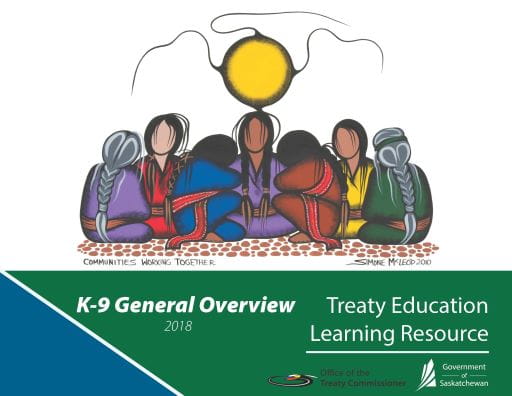
As I read through and listened to the resources provided for this blog, I came across lots of new perspectives on Treaty Education and many great ways to implement Indigenous knowledge into the classroom. The article and videos provided are great resources to provide not just new teachers but all teachers, the Treaty Education curriculum is also a great resource especially for the introduction Indigenous knowledge and ways of learning. I would answer this student with an email response discussing the issue they have stumbled upon and ways to encourage students and other teachers to learn more about Indigenous knowledge, culture, ways of life, ways of learning and teaching. I would begin my response in this way:
I appreciate you bringing this issue to my attention but this is unfortunately something that is out of my control but I am able to provide some guidance on how to go about this situation. This is a long-lasting issue in the Canadian education system and it is with new generations of teachers that can resolve this issue. As a new teacher trying to find their own teaching philosophy, entering into a school that is not willing to change the way the curriculum is taught can be tough but it is something most new teachers have to overcome. I think you need to bring up this issue with your principal and coop teacher of your school as teaching Treaty Education is still a curriculum and it does not matter the cultural perspectives of the students in the school because this is part of Canada’s history.
I think one possibility to go about this issue with your students would be to explain to them the importance of the Treaty Education curriculum, if there are no teachers in the school who put the effort into teaching these students about the Indigenous knowledge then the students are not being taught the whole extent of the curriculum. An idea would be to physically show the students that learning Indigenous perspectives is in the Saskatchewan curriculum and in the opening statements of each subject we are to teach, honour, and respect all the cultural perspective with the main focus on Euro-Canadian and Indigenous cultures. (Saskatchewan Ministry of Education, 2011). Explain to the students that teaching Treaty Education is a large part of Canadian history and to ignore the Indigenous perspective would be to simply teach the incorrect information because Indigenous people were the first people on this land. The fact that there are no Indigenous students who attend the school does not matter, Indigenous perspectives and knowledge is not an extra curriculum but it is a way of life and learning that are incorporated into the new direction of the curriculum, that focuses on diversity and equality. Students need to know that Indigenous people are still suffering from the past and what our ancestors have done to the Indigenous people. Teaching Treaty Education to future generations creates a society progressing to equality and creates opportunity for reconciliation which involves hearing the stories of Indigenous people, learning about Indigenous perspectives, culture, and way of life to allow Indigenous people to heal from their suffering. (Saskatchewan Ministry of Education, 2013).
Teaching students about reconciliation is a great way to introduce Treaty education because it involves all aspects of indigenous culture, hearing stories from the past but realizing that they are still affecting the present and realizing they are all interconnected. What is means to understand the phrase, “we are all treaty people,” is to understand we as people are all one, we may all have different creation stories but we are on the same land, that was taken from Indigenous people through the treaties. Cynthia Chamber’s article, We are all Treaty Peopledoes an excellent job of explaining this further. On page 29, “the treaties are a story that we share. It is our story: the one about the commons, what was shared and what was lost. It is elegy to what remains to be lost if we refuse to listen to each other’s stories no matter how strange they may sound, if we refuse to learn each other’s stories, songs, and poems, from each other’s knowledge about this world and how to make our way in it.” All people live together on the land of Canada but before Canada became a country with provinces, the Indigenous people signed the land to the treaties which gave the Crown ownership. So, we all live on treaty land which makes us all treaty people. This is the reason we celebrate diversity and we created orange shirt day.
Treaty Education is not easy to teach but just believe in yourself, you are a teacher making a big impression on these students who have never really received much education about Indigenous knowledge. Keep educating yourself further and you will find the students will fall into the same role as if you are excited to teach, they will be excited to learn. Good luck!